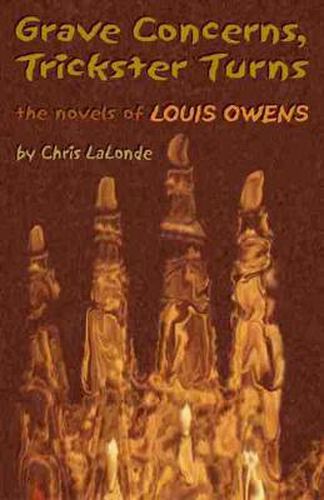Readings Newsletter
Become a Readings Member to make your shopping experience even easier.
Sign in or sign up for free!
You’re not far away from qualifying for FREE standard shipping within Australia
You’ve qualified for FREE standard shipping within Australia
The cart is loading…






Who am I? What am I? Where do I belong? These
grave concerns
take a lifetime for most people to answer. They become even trickier for American Indians, who all too often face literal and figurative burial by those in power. Such concerns permeate the works of Louis Owens, a mixedblood writer of Choctaw-Cherokee-Irish descent.In this first book-length examination of Owens’s writings, Chris LaLonde focuses on five critically acclaimed novels: The Sharpest Sight, Bone Game, Wolfsong, Nightland, and Dark River. According to LaLonde, Owens works his stories like a trickster, turning ideas back against themselves and playing with contradictory possibilities. The conflicting Native and Western perspectives of time, history, humor, and authority dramatize hoe such classes can threaten to undermine any sense of home and identity for Indians. In the process, Owens underscores the sham of the ethnic identities foisted upon American Indians-the Noble Savage, the Silent Indian, the Vanishing Native, and the Indian as Tragic Victim.
$9.00 standard shipping within Australia
FREE standard shipping within Australia for orders over $100.00
Express & International shipping calculated at checkout
Who am I? What am I? Where do I belong? These
grave concerns
take a lifetime for most people to answer. They become even trickier for American Indians, who all too often face literal and figurative burial by those in power. Such concerns permeate the works of Louis Owens, a mixedblood writer of Choctaw-Cherokee-Irish descent.In this first book-length examination of Owens’s writings, Chris LaLonde focuses on five critically acclaimed novels: The Sharpest Sight, Bone Game, Wolfsong, Nightland, and Dark River. According to LaLonde, Owens works his stories like a trickster, turning ideas back against themselves and playing with contradictory possibilities. The conflicting Native and Western perspectives of time, history, humor, and authority dramatize hoe such classes can threaten to undermine any sense of home and identity for Indians. In the process, Owens underscores the sham of the ethnic identities foisted upon American Indians-the Noble Savage, the Silent Indian, the Vanishing Native, and the Indian as Tragic Victim.